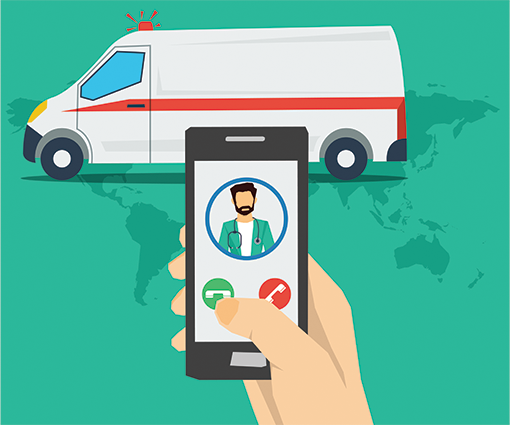LA Fire Dept. Uses Telehealth to Triage and Treat 911 Callers
With the Coronavirus pandemic taxing rescue and healthcare resources, the fire department is using a telehealth program to separate urgent and non-urgent calls, curb ED transports and reduce chances of contamination.

Source: ThinkStock
- The Los Angeles Fire Department is launching a telehealth program to separate non-emergency calls from emergency calls fielded by fire and rescue department on the 911 system.
(For more coronavirus updates, visit our resource page, updated twice daily by Xtelligent Healthcare Media.)
Similar to Mobile Integrated Health programs used in cities like Houston, the new service enables EMTs, paramedics and fire department personnel to access a nurse or nurse practitioner via telemedicine to assess and treat non-urgent cases, rather than sending them by ambulance to the nearest emergency department. First responders can also loop in emergency physicians for additional support.
“The program connects patients who do not require emergency care with a provider who can assess the patient’s condition, provide a treatment plan, and even call in prescriptions to support the treatment plan,” Los Angeles County Fire Battalion Chief Roland Sprewell told the Antelope Valley Times. “To date, the program has diverted many patients who otherwise would have gone to an emergency department, keeping those beds available for those who really need them.”
The service was launched in response to the ongoing Coronavirus pandemic, which has seriously strained fire, rescue and healthcare services across the country.
MIH programs, which include community paramedicine and other versions of the service, have been launched in communities across the nation in an effort to reduce unnecessary 911 calls and emergency transports and improve healthcare access for underserved residents.
With the nation caught in the grip of the COVID-19 virus, these programs are being used to help separate and treat non-virus-related calls and direct resources to patients who may be infected. They also help reduce the chances of spreading the virus to rescue personnel.
A siumilar program has just been launched in Virginia, where VCU Health is using telehealth to help first responders in rural counties evaluate patients who've called 911 to report possible Coronavirus symptoms.
“These efforts will help lessen emergency department surge visit volumes, EMS provider personal protective equipment use, EMS provider exposure time with potential COVID-19 patients, and the time an ambulance is out of service for its community,” Harinder Dhindsa, MD, associate professor and interim chair of the Department of Emergency Medicine in the VCU School of Medicine and medical director of VCU Critical Care Transport, said in a press release.
“As an agency that has been exploring telemedicine for some time, this propels us into a platform that allows for direct physician consult on the scene with existing infrastructure,” Blake Byrd, assistant chief of Westmoreland EMS, said of the pilot program, the first of its kind in the state. “By having this capability in the field with our providers, we have the potential to screen patients that meet a pre-determined protocol and potentially keep our limited resources available for additional volume that may result from COVID-19. This capability is crucial for our system from both a management and pre-hospital care perspective.”
